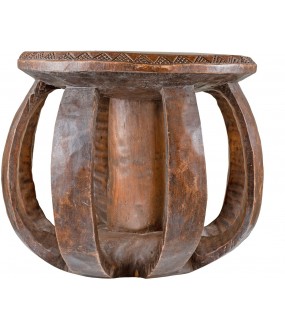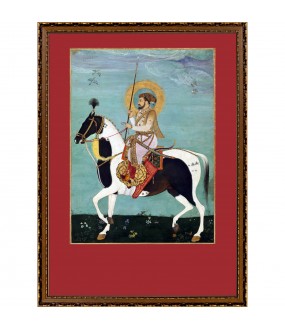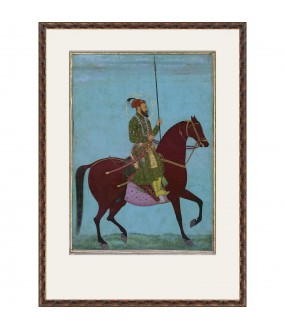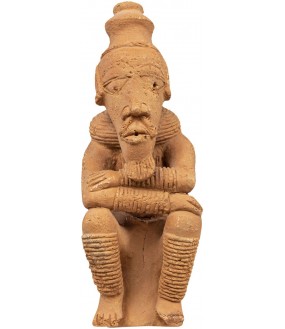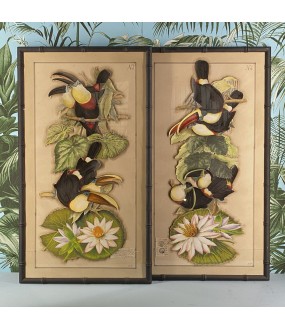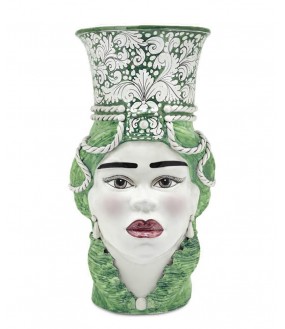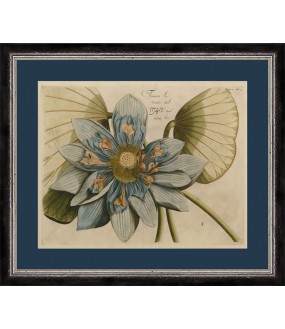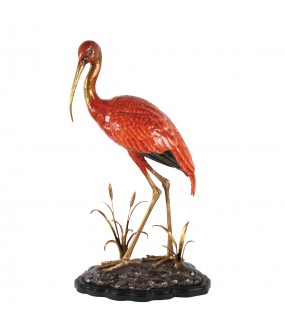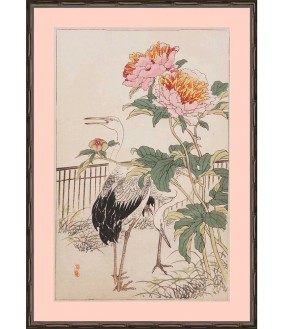Objects of Curiosities
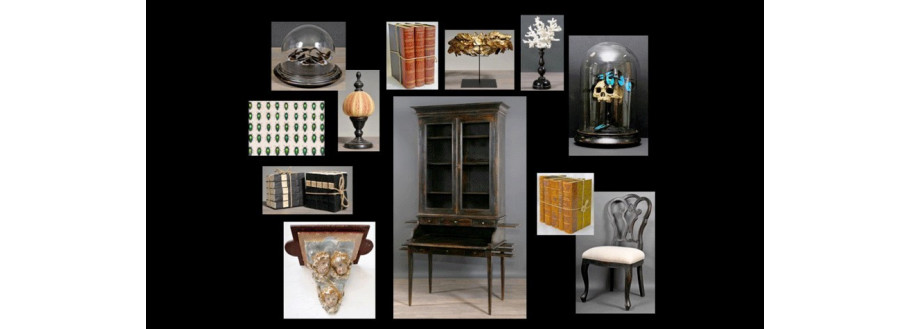
Find in this section objects of curiosities, unusual objects and unique pieces of Art & History and a selection of genuine and original antique furniture or current production drawing inspiration from the past.
To find more, please click here.
Active filters
-
Chief Stool, Guinee Bissau, Mid XIXth Century
€1,200.00A unique piece. The items shown in the picture are exactly the items you will receive.
Superb chef's stool hand carved from a single piece of wood by the Baga tribe of Guinea-Bissau.
Stools are a minor art form for the Baga whose large masks and snake figures are among the largest and most impressive in Africa.
Striking modern pumpkin shape with intricate decorative carvings around the top edge.
It shows signs of wear due to aging but remains remarkably solid.
Material: Wood
Age: mid-20th century
Origin: Guinea Bissau
Tribe: Baga
-
Set of 2 Ancient African Stools, Gabon
€1,200.00Two unique pieces. The items shown in the picture are exactly the items you will receive.
Chairs and stools are prestigious objects for the Kota people of Gabon.
You can notice how they use similar characteristics on all of their sculptures and other subjects that they create. L
The seat is decorated with various geometric patterns engraved in what appears to be copper and brass.
It shows signs of wear due to aging but remains remarkably solid.
Material: Wood, Brass and Copper
Age: mid-20th century
Origin: Gabon
Tribe: Kota
-
Male King Figure, H156cm, Mid XXth Century
€3,200.00The unique piece shown in the picture is the exact item you will receive.
Wooden male king (Ndop) figure.
The figure sits cross-legged on a square platform (yiing) carved with a representation of a climbing vine.
Ndop statues are idealized representations of the Nyimi or kings of the Kuba kingdom.
Material: Wood
Age: mid-20th century
Origin: Congo
Tribe: Kuba Bushoong
-
Engraving of Shah Jahan on Horseback 50x70cm
€360.00Magnificent engraving of Shah Jahan parading on horseback.
Beautiful warm and deep colors, aged carved wood frame.
Dimensions of the glass pane: 50x70cm.
Mirza Shahab-ud-Din Baig Muhammad Khan Khurram (5 January 1592 – 22 January 1666), also known as Shah Jahan I, literally 'King of the World', was the fifth Mongol emperor, reigning from 1628 to 1658. Under his reign, the Mongols reached the height of their architectural achievements and cultural glory.
Third son of Jahangir (r. 1605-1627), Shah Jahan participated in military campaigns against the Rajputs of Mewar and the Lodis of the Deccan. After Jahangir's death in October 1627, Shah Jahan defeated his youngest brother Shahryar Mirza and crowned himself emperor in Agra Fort. In addition to Shahryar, Shah Jahan executed most of his rival claimants to the throne. He commissioned many monuments, including the Red Fort, the Shah Jahan Mosque and the Taj Mahal, where his favorite wife, Mumtaz Mahal, is buried. In foreign affairs, Shah Jahan presided over aggressive campaigns against the Deccan sultanates, conflicts with the Portuguese, and wars with the Safavids. He also put down several local rebellions and faced the devastating Deccan famine of 1630–32.
In September 1657, Shah Jahan fell ill and appointed his eldest son Dara Shikoh as his successor. This appointment led to a succession crisis among his three sons, of which Shah Jahan's third son, Aurangzeb (r. 1658–1707), emerged victorious and became the sixth emperor, executing all of his surviving brothers, including the Crown Prince Dara Shikoh. After Shah Jahan recovered from his illness in July 1658, Aurangzeb imprisoned his father at Agra Fort from July 1658 until his death in January 1666.[6] He was buried next to his wife in the Taj Mahal. His reign is known for putting an end to the liberal policies initiated by Akbar.
During Shah Jahan's era, Islamic revival movements like the Naqshbandi began to shape Mongolian politics.
-
Engraving of Aurangzeb 50x70cm
€360.00Magnificent engraving of Aurangzeb parading on horseback.
Beautiful warm and deep colors, aged carved wood frame.
Dimensions of the glass pane: 50x70cm.
Muhi al-Din Muhammad (c. 1618 – March 3, 1707), commonly known as Aurangzeb lit. 'Ornament of the throne' and by his royal name Alamgir I, lit. 'Conqueror of the world', was the sixth Mughal emperor, reigning from 1658 until his death in 1707.
Under his reign, the Mongol empire reached its peak with a territory covering almost the entire Indian subcontinent.
Widely considered the last effective Mongol ruler, Aurangzeb compiled the Fatawa 'Alamgiri and was among the few monarchs to fully establish Sharia law and Islamic economics throughout the Indian subcontinent.
Aurangzeb belonged to the aristocratic Timurid dynasty, held administrative and military positions under his father Shah Jahan (r. 1628–1658), and was recognized as an accomplished military commander. Aurangzeb was viceroy of Deccan in 1636-1637 and governor of Gujarat in 1645-1647. He jointly administered the provinces of Multan and Sindh in 1648-1652 and continued his expeditions into neighboring Safavid territories. In September 1657, Shah Jahan appointed his eldest and liberal son Dara Shikoh as his successor, a decision repudiated by Aurangzeb, who proclaimed himself emperor in February 1658. In April 1658, Aurangzeb defeated Shikoh's allied army and the kingdom of Marwar at victory. Aurangzeb's decisive victory at the Battle of Samugarh in May 1658 cemented his sovereignty and his suzerainty was recognized throughout the Empire. After Shah Jahan recovered from his illness in July 1658, Aurangzeb declared him incompetent to rule and imprisoned his father in Agra Fort.
-
Ancestor in Terracotta, Nigeria, Mid XXth Century
€440.00The unique piece shown in the picture is the exact item you will receive.
Little is known about the Nok culture, which is defined largely on the basis of its stunning terracotta artwork.
Aesthetically, the sculpture is both naturalistic and expressionistic, with very distinctive elongated forms, triangular eyes, pierced pupils and nostrils, and elaborate hairstyles.
The function of this art is unclear, although the care with which they are executed has led some to claim that they represent nobility.
Material: Terracotta
Age: mid-20th century
Origin: Nigeria
Tribe: Nok
Tribe: Kuba Bushoong
-
Antique Parrots Engravings, Set of 2
€864.00A set of two beautiful reproductions of engravings of magnificent flamboyantly colored parrots whose species have unfortunately disappeared.
Engravings with powder pink marie-louis and very beautiful black wood ornamentation frame.
Glass size: 50x70cm
-
Large Statuette, H63,5cm, Etruscan Art
€460.00Large statuette presenting a reproduction of an "Ombra della Sera", a masterpiece of Etruscan Art dating from the 3rd century BC. BC, from ancient foundries in the Volterra region of Italy, and preserved at the Guarnacci Museum.
The story goes that Giacometti, in love with these statuettes, was inspired by them to design his emblematic sculptures.
Its workshop bronze patina gives it a warm and authentic appearance.
Material: bronze finish metal.
A very beautiful contemporary artisanal work for this beautiful object of Art.
For a refined and eternal interior decoration.
-
Toucans Engravings Made by Collages
€2,990.00A pair of magnificent Toucans engravings made from collages of old juxtaposed engravings which are previously hand painted.
A magnificent artisanal work of remarkable finesse executed in Italy according to an ancestral process.
Within each frame an atmosphere is created by a juxtaposition of exquisite hand engravings which are engraved and printed on vintage presses from the 1800s.
Each image is printed in black and white, individually hand colored with gouache and in watercolor then cut out.
Superb and one of a kind.
-
Ceramic Vase, Green Woman Moor Head
€900.00Ceramic vase, head of a Moorish woman, Sicily - Italy.
Handcrafted in ceramic, double fired and hand painted in Italy.
The moors were members of Muslim people of North Africa, of mixed Arab and Berber descent. In the 8th century they were converted to Islam and established power in North Africa, Sicily and Spain, where they established a civilization (756–1492).
THE LEGEND :
During the Arab domination in Sicily, in Palermo city, there was an Arab Suburb called "La Kalsa".
In this small suburb was living a beautiful young lady who used to spend her time in taking care of the flowers on her balcony.
One day, a young moor was walking down the lady's balcony. He noticed the beauty of the lady and he truly fell in love with her.
He did not wait a minute to declare his love for her, and the beautiful young lady, impressed by the lover's boldness, started feeling the same love.
Unfortunately, the young moor was already married and was father of a few kids... as soon as the young lady found out that he would have left for going back to his family, she waited until the night and killed him while he was sleeping deeply. She cut his head and used it as a vase for her plants, so that she could have him forever by her side.
As the beauty of this vase was magnificent, all the neighborhood wanted to own a similar one.
From that moment, they decide to create ceramics moor heads as vases.
-
Giant Ceramic Vase Woman Moor Head
€2,500.00Magnificent traditional ceramic vase in the shape of a Moorish woman's head in green or malachite color - Italy. An extreme delicacy.
Handcrafted in ceramic, double fired. Completely made and painted by hand by the original artisan producer from Caltagirone - Sicily.
Distributed exclusively by Arteslonga.
The Moors were members of the Muslim people of North Africa, of mixed Arab and Berber origin. In the 8th century, they converted to Islam and established power in North Africa, Sicily and Spain, where they established a civilization (756-1492).
THE LEGEND :
During the Arab rule in Sicily, in the city of Palermo there was an Arab suburb called "La Kalsa".
In this small suburb there lived a beautiful young woman who spent her time taking care of the flowers on her balcony.
One day, a young Moor was walking under the lady's balcony. He noticed the beauty of the young lady and he fell in love with her.
He did not wait a minute to declare his love and the beautiful young girl, impressed by the lover's audacity, quickly felt the same love.
Unfortunately, the young Moor was already married and was the father of several children... as soon as the young woman discovered that he might leave to find his family one day, she waited until nightfall and killed him while he was sound asleep. She cut off his head and used it as a vase for her plants so that she could have him by her side forever.
As the beauty of this vase was remarkable, the whole neighborhood wanted to own one like it.
From this moment, the creation of vases in the shape of Moorish heads began...
-
Moor Ceramic Vase, Matt Mud Color
€1,200.00Ceramic vase, male Moor's head with representation of beautiful yellow lemons, made entirely by hand in Sicily - Italy.
Handcrafted in ceramic, double firing and hand painted.
The Moors were members of the Muslim people of North Africa, of mixed Arab and Berber origin. In the 8th century they were converted to Islam and established power in North Africa, Sicily and Spain, where they established a civilization (756-1492).
THE LEGEND :
During the Arab domination in Sicily, in the city of Palermo there was an Arab suburb called "La Kalsa".
In this small suburb lived a beautiful young woman who spent her time tending to the flowers on her balcony.
One day a young Moor was walking under the lady's balcony. He noticed the beauty of the young lady and he fell in love with her.
He did not wait a minute to declare his love and the beautiful young girl, impressed by the audacity of the lover, quickly experienced the same love.
Unfortunately, the young Moor was already married and had several children ... as soon as the young woman found out that he could leave to find his family, one day she waited for night and killed him while he slept soundly. She cut off his head and used it as a vase for her plants so she could have him forever by her side.
As the beauty of this vase was remarkable, the whole neighborhood wanted to own a similar one.
From this moment, the creation of vases in the shape of the heads of Moors began...
-
Blue Lotus Engravings, Set of 2
€680.00A set of two beautiful prints of magnificent large blue lotuses.
Engravings with blue marie-louis and very beautiful frame with black wood ornamentation and silver edging.
Glass size: 50x70cm
The lotus is an aquatic plant whose flower is magnificent and which is magnified in these two large engravings in a beautiful blue color. This particular tone of blue has earned it the name of a shade, azure tending to sky blue: caeruleum blue (ceruleum).
The blue lotus is actually a water lily.
Although it bears the name Lotus, the Blue Lotus (in Latin Nymphaea caerulea Savigny) is actually a water lily.
This aquatic plant grows on the edges of lakes and stagnant waters.
Today, it has almost completely disappeared from the Nile region and it is cultivated mainly in Asia (China and Thailand).
The blue lotus belongs to the family Nymphaeaceae (water lily family), group Apocarpiae, subgenus Brachyceras, and forms and subspecies None (cf. Slocum et al. 1996).
Lotuses were the most widely cultivated ritual plants in ancient Egypt. They grew wild and had also been planted in artificial bodies of water (Hugonot 1992).
The blue lotus was considered a sacred plant. The god of immortality and resurrection Nefertum was represented as a young man or a lion whose hair was decorated with a blue lotus flower. He offered the flower to the sun god Ra, to relieve the pain in his old body. The Egyptians especially appreciated their enchanting scent of hyacinth, their symbolism and probably also their intoxicating effects...
Lotus buds and flowers were popular head and hair ornaments. The garlands placed in the tomb of Pharaoh Ramses II (1290-1223 B.C.E.) were almost entirely composed of white and blue lotus flowers (Germer 1988). Many buds, petals and garlands have been found as decoration for mummies or as funerary objects.
In ancient Egypt, the blue lotus was closely linked to the concepts of the afterlife and rebirth. The flower represents enlightenment and the awakened consciousness of the deceased; it is “this lotus flower which shines in the earth” (Book of the Dead, chapter 174, line 30; cf. Dassow 1994).
In the myth of the battle between Horus and Seth, the lotus flower appears as a symbol of the divine all-seeing eye: when Seth found Horus resting under a tree in an oasis, he plucked out both his eyes and buried them in the sand. After which they transformed into lotus flowers.
Lotuses are rustic aquatic plants of absolute beauty, vigorous and imposing and can grow anywhere in France!
-
Red Crane in Porcelain and Brass, 70cm high
€2,200.00Superb figurine of a flamboyant red crane made of porcelain and brass, 70cm high and 46cm wide.
A contemporary artisanal work of great beauty.
The bird's legs are made of brass.
A remarkable piece for a refined and unique interior decoration.
-
Engravings by K. Baerei, 19th C. Set of 2
€530.00A set of two beautiful engravings by the 19th century Japanese artist Kono Baerei.
Engravings with black marie-louise and very beautiful frame in aged black wood and gold edging or with a large pink marie-louise and a thin black bamboo imitation frame.
Glass size: 55x80cm
Engravings representing cranes and beautiful peonies under glass.
Bairei became a student of the Maruyama school painter Nakajima Raishō at the age of eight, and then a student of the Shijō school painter Shiokawa Bunrin at the age of twenty-seven. He continued his education in the Nanga school style under Nakanishi Kōseki and Maeda Chōdō. With Gennyo, abbot of Higashi Hongan-ji, he traveled throughout Kyūshū and central Japan, making numerous drawings.
In 1878, Bairei began preparations for an art school, which opened in 1880 as the Kyoto Prefectural School of Painting. He left this school in 1881 and taught his students in his workshop until 1891. In 1893, he became a member of the Arts Committee of the Imperial Household. In 1894, he was commissioned to paint pieces of Higashi Hongan-ji.
Bairei was a prominent figure in Kyoto's artistic circles, where he organized and promoted artistic activities. He played a particularly important role in his educational work. His many students include Takeuchi Seihō, Kikuchi Hōbun, Kawai Gyokudō.
His own work, often characterized by bold brushstrokes, displays traditional charm and sensitivity.
Its flowers, birds (Kachō-ga), and landscapes show a touch of Western realism. Bairei is also known for his spontaneous woodcut sketches.



